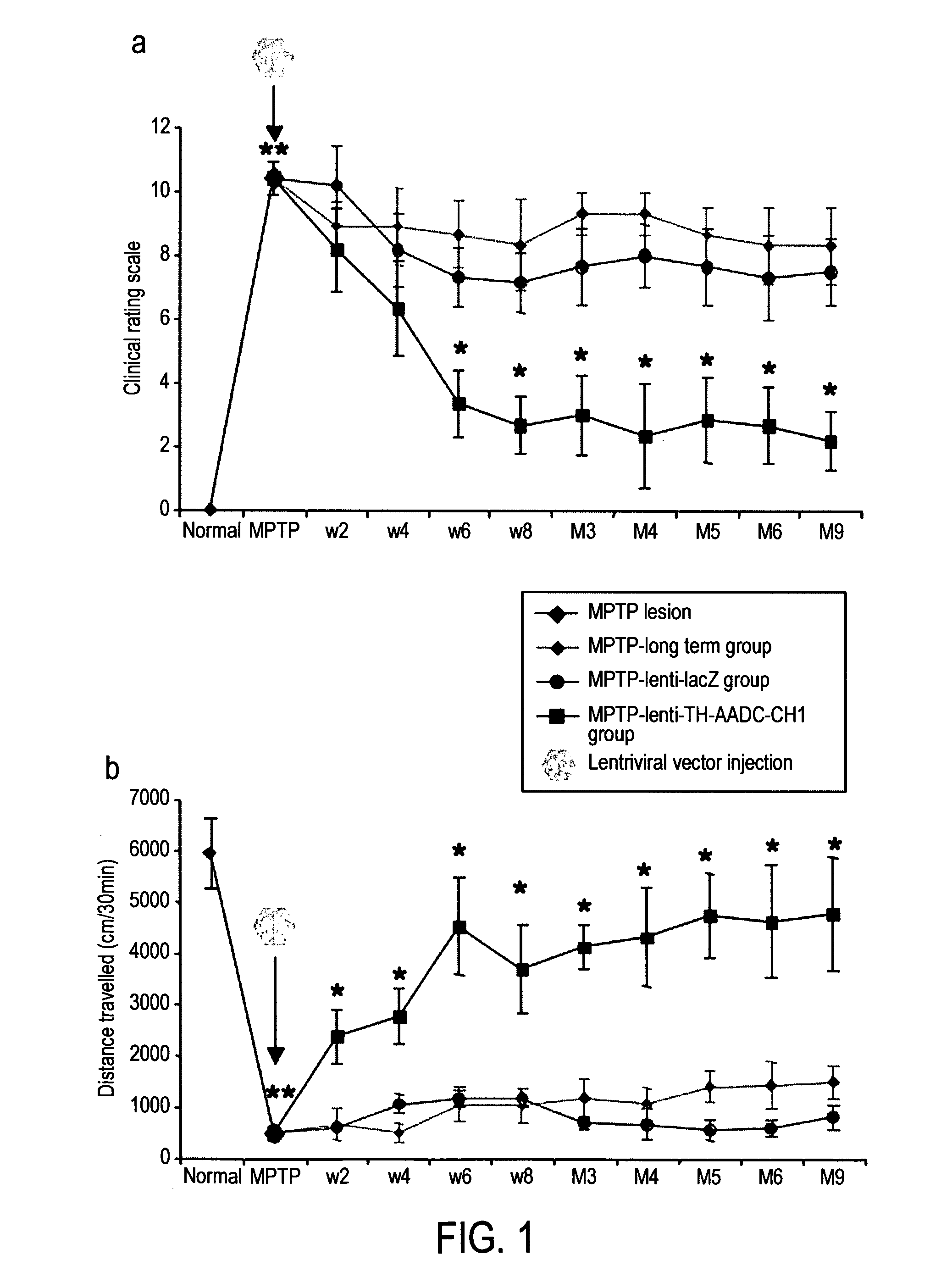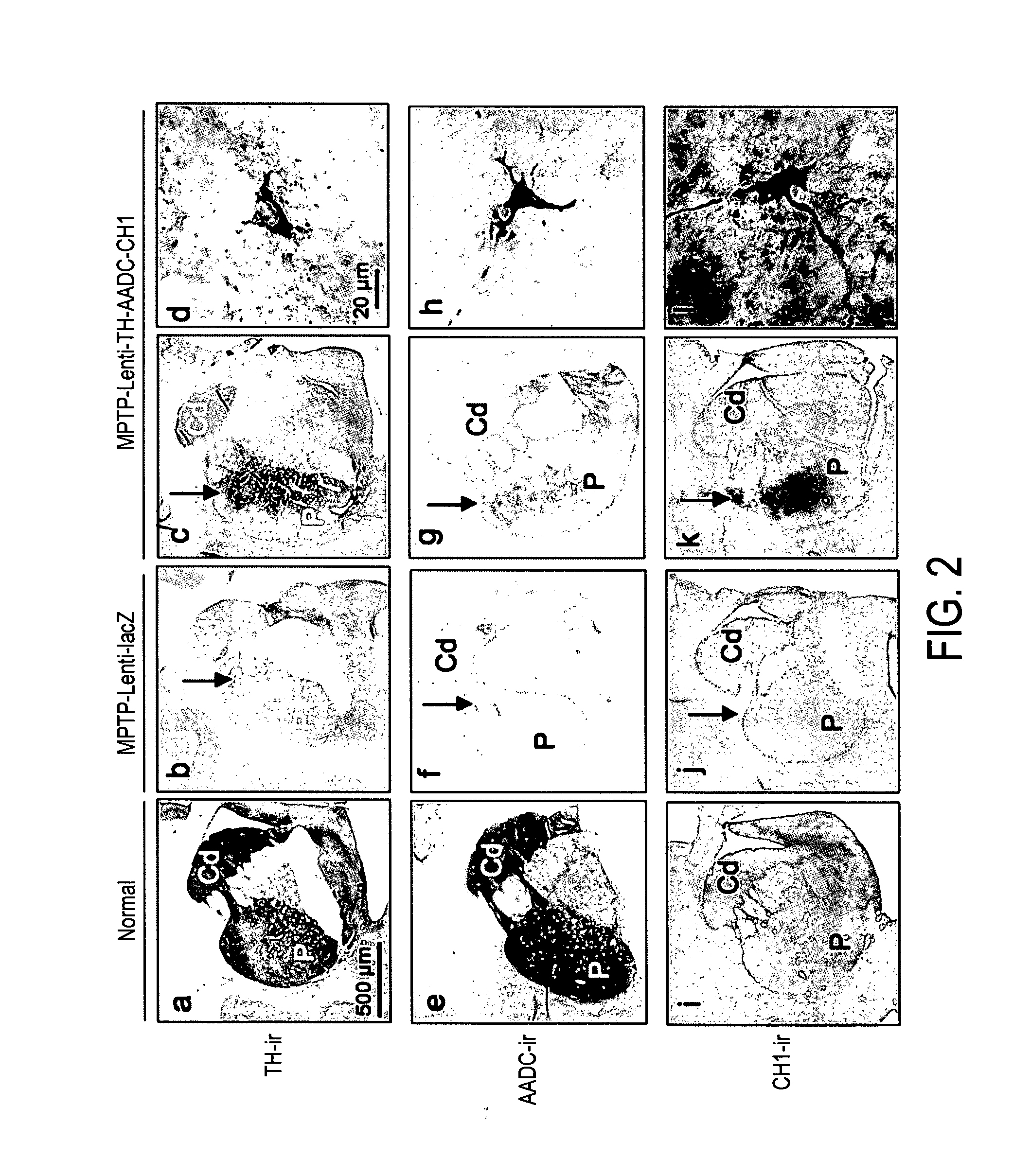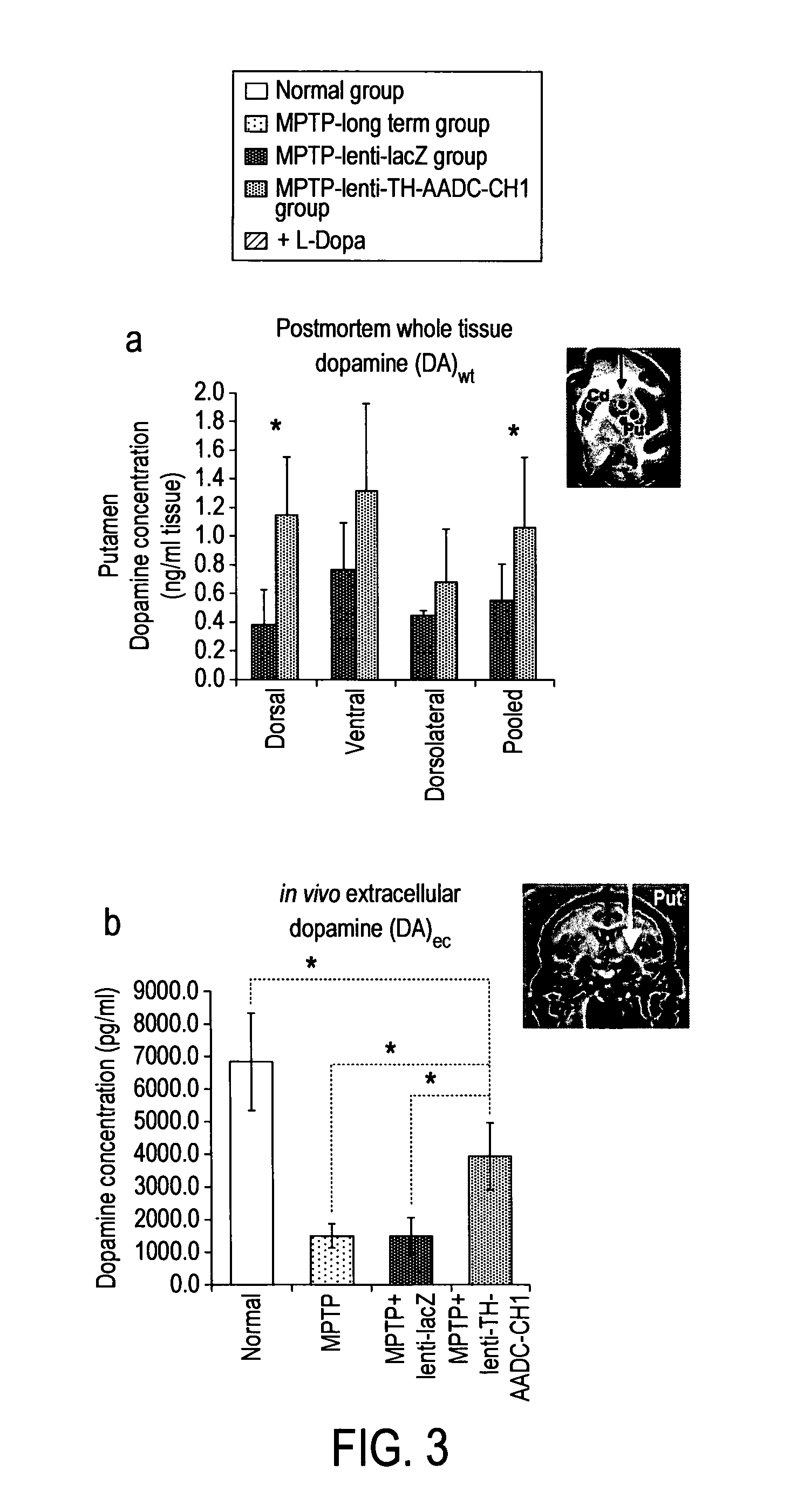Method
a technology of dopamine replacement and gene therapy, which is applied in the field can solve the problems of critically overdose of intact ventral striatum and cortex, involuntary abnormal movements called dyskinesia, and the inability to graft stem cells into the substantia nigra with limited success, so as to improve the efficacy of dopamine replacement gene therapy, avoid sequestration of extracellular dopamine, and increase the effect o
- Summary
- Abstract
- Description
- Claims
- Application Information
AI Technical Summary
Benefits of technology
Problems solved by technology
Method used
Image
Examples
example 1
Long Term Motor Behavioural Restoration
[0230]To investigate the potential of gene transfer of TH, AADC and CH1 to correct Parkinsonism, a long term study was performed in the MPTP primate model of PD. A tricistronic lentiviral vector was designed that encodes the genes for TH, AADC and CH1 (Lenti-TH-AADC-CH1). One to eight weeks after the cessation of MPTP intoxication, 18 MPTP treated macaques were assigned into three behaviourally equivalent groups. The first group (MPTP-Lenti-TH-AADC-CH1, n=6) received bilateral injections of Lenti-TH-AADC-CH1 into each motor putamen. The second group (MPTP-Lenti-lacZ, n=6) received a control EIAV vector encoding the LacZ reporter gene. The third group (MPTP-long term, n=6) did not receive any surgical intervention but were included as an additional control to evaluate the stability of the MPTP model. All animals were maintained throughout the study without treatment using L-Dopa or dopaminergic drugs.
[0231]Animals treated with Lenti-TH-AADC-CH1 ...
example 2
Local and Continuous Dopamine Production in Motor Striatum
[0232]To investigate in vivo gene transfer and lentiviral mediated dopamine production, histological analysis of transgene expression was performed and local dopamine levels were measured in the striatum of study animals. Animals treated with Lenti-LacZ were demonstrated to have an average of 54 947 transduced cells per injected putamen, which were mostly neurons (NeuN-ir positive >90%, FIG. 10). Histological analysis also demonstrated that TH, AADC and CH1 positive neurons were evident in the vicinity of the putaminal injection site in MPTP Lenti-TH-AADC-CH1 treated animals but not in MPTP-Lenti-lacZ controls (FIG. 2).
[0233]To quantitatively measure lentiviral mediated dopamine production in the putamen, two indices were applied: (1) whole tissue dopamine levels [DA]wt, measured by post-mortem analysis of striatal punches: this index quantifies both intracellular dopamine (presynaptic nigral dopaminergic terminals) and extra...
example 3
Restoration of Basal Ganglia Activity
[0237]To determine the mechanism by which Lenti-TH-AADC-CH1 corrected motor dysfunction, neuronal activity was investigated within the basal ganglia system.
[0238]The current model of basal ganglia dysfunction in PD suggests that abnormal over-activity of output nuclei such as the internal globus pallidus (GPi) account for the motor symptoms observed in this disorder. To determine if Lenti-TH-AAADC-CH1 could normalize neuronal electrical activities in basal ganglia output nuclei, normal and MPTP-treated macaques underwent unitary recordings in the GPi. In agreement with previous reports, a significant increase (52%, MW; p4.a). Interestingly, striatal Lenti-TH-AAADC-CH1 administration significantly reduced the abnormal high firing rate and restored the firing rate of GPi neurons to normal (unlesioned) levels (FIG. 4.a).
[0239]The pattern of neuronal firing in the GPi is also important in the pathophysiology of PD, and so the burst activity of record...
PUM
 Login to View More
Login to View More Abstract
Description
Claims
Application Information
 Login to View More
Login to View More - R&D
- Intellectual Property
- Life Sciences
- Materials
- Tech Scout
- Unparalleled Data Quality
- Higher Quality Content
- 60% Fewer Hallucinations
Browse by: Latest US Patents, China's latest patents, Technical Efficacy Thesaurus, Application Domain, Technology Topic, Popular Technical Reports.
© 2025 PatSnap. All rights reserved.Legal|Privacy policy|Modern Slavery Act Transparency Statement|Sitemap|About US| Contact US: help@patsnap.com



